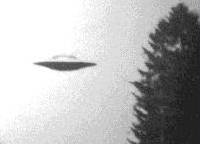Article/Document:
Panspermia Q and A: Leading Proponent Chandra Wickramasinghe
SPACE.com, 27 October 2000
original source | fair use notice
Summary: Astronomer Chandra Wickramasinghe is director of the Cardiff Centre for Astrobiology. He is a former student of Fred Hoyle, with whom he co-developed the modern theory of panspermia. Wickramasinghe, who proposed in 1974 that dust in interstellar space and in comets was largely organic, is currently developing methods for detecting life processes in space.
By Robert Roy Britt
Senior Science Writer
Astronomer Chandra Wickramasinghe is director of the Cardiff Centre for Astrobiology. He is a former student of Fred Hoyle, with whom he co-developed the modern theory of panspermia. Wickramasinghe, who proposed in 1974 that dust in interstellar space and in comets was largely organic, is currently developing methods for detecting life processes in space.
We reached Wickramasinghe via e-mail while he was visiting the Centre for Astronomy in Pune, India, and got his thoughts on recent news that has lent support to the panspermia theory.
SPACE.com: Do you think there will be mild, or perhaps significant renewed interest in panspermia?
Wickramasinghe: With every new piece of experimental/observational evidence that comes to light showing that microbial life can withstand the rigors of space travel, there is a renewed interest in panspermia. Until recently, panspermia was not even regarded as scientific hypothesis. Now that has changed.
The general view still prevailing is that although life could easily be transported, terrestrial life must have begun on Earth. There is no logic that demands that and at the present time all the evidence is against that point of view.
SPACE.com: While most scientists seem to support panspermia as a possibility, I've never seen an expression of the chances that it is the method for originating life on Earth. What do you think are the odds that panspermia is the cause, as opposed to the "primordial soup" idea?
Wickramasinghe: The survival properties of bacteria under extreme conditions show clearly the feasibility of transferring microbial life across galactic distances. On the other hand the emergence of life from a primordial soup on the Earth is merely an article of faith that scientists are finding difficult to shed. There is no experimental evidence to support this at the present time.
Indeed all attempts to create life from non-life, starting from Pasteur, have been unsuccessful. Also recent geological evidence indicates that life was present on Earth over 3.6 billion years ago, at a time when the Earth was being pummeled by comet and meteorite impacts, and no primordial soup could have been expected to brew.
Not all microbes in interstellar space would survive of course, but the survival of even a minute fraction of microbes leaving one solar system and reaching the next site of planet formation would be enough for panspermia to be overwhelmingly more probable than starting life from scratch in a new location.
The odds against microbes surviving such a space journey pales into insignificance when compared with the insuperable odds against starting life anew in a warm little pond on the Earth.
SPACE.com: If life did not start on Earth, where and how did it start? Describe your view of the most likely sequence of events that led to life on Earth.
Wickramasinghe: The steps as I see them are thus:
Life got started on a cosmological scale including the combined resources of all the comets around all the stars in all the galaxies of the entire universe.
Once started, the robustness of life as demonstrated in the recent articles ensures its essential immortality. It survives and is repeatedly regenerated in the warm watery interiors of comets. The space between stars is littered with cometary debris, some of which contains the seeds of life.
Comets arriving at the Earth from the 100 billion-strong Oort cometary cloud of our solar system brought the first life onto our planet some 3,800 million years ago.
Evolution of life on the Earth was directed by the continued arrival of cometary bacteria, bacteria which must still be arriving at the present time.
SPACE.com: Where do you think it is most plausible that the seeds for terrestrial life would have come from? There is much talk of possible past or present life on Mars, Europa and Titan. Are these the three most likely candidates for having seeded Earth?
Wickramasinghe: There might have been some local transfers of microbes between some of the planets, e.g. Mars and Earth, and between planets and satellites such as Europa, and maybe Titan. But these are minor aspects of panspermia. The main transfer is: comets to interstellar and interplanetary space, back to comets, amplification in comets, transfer from comets to all prospective habitats on planets and planetary satellites.
Read more articles on this topic:






